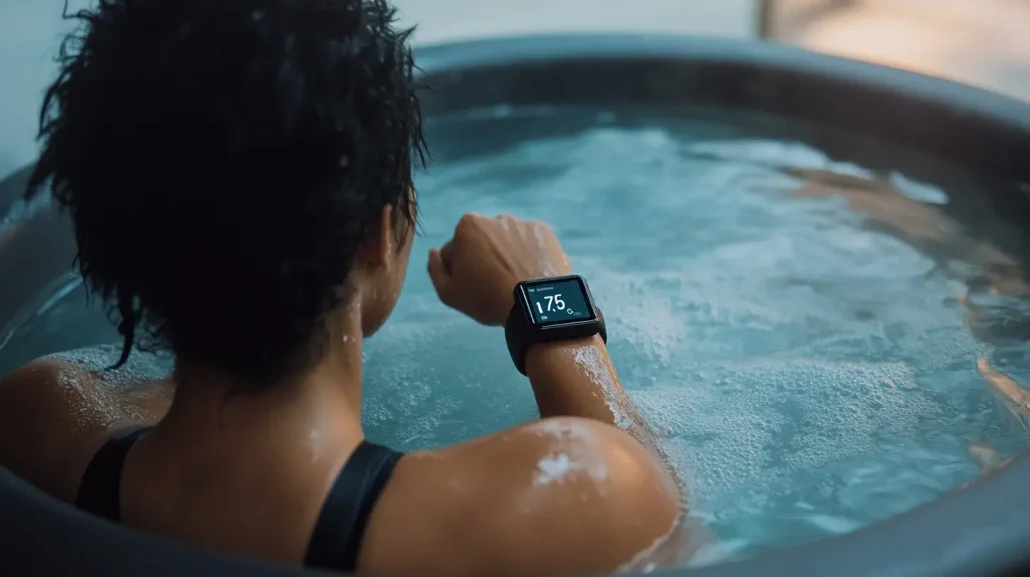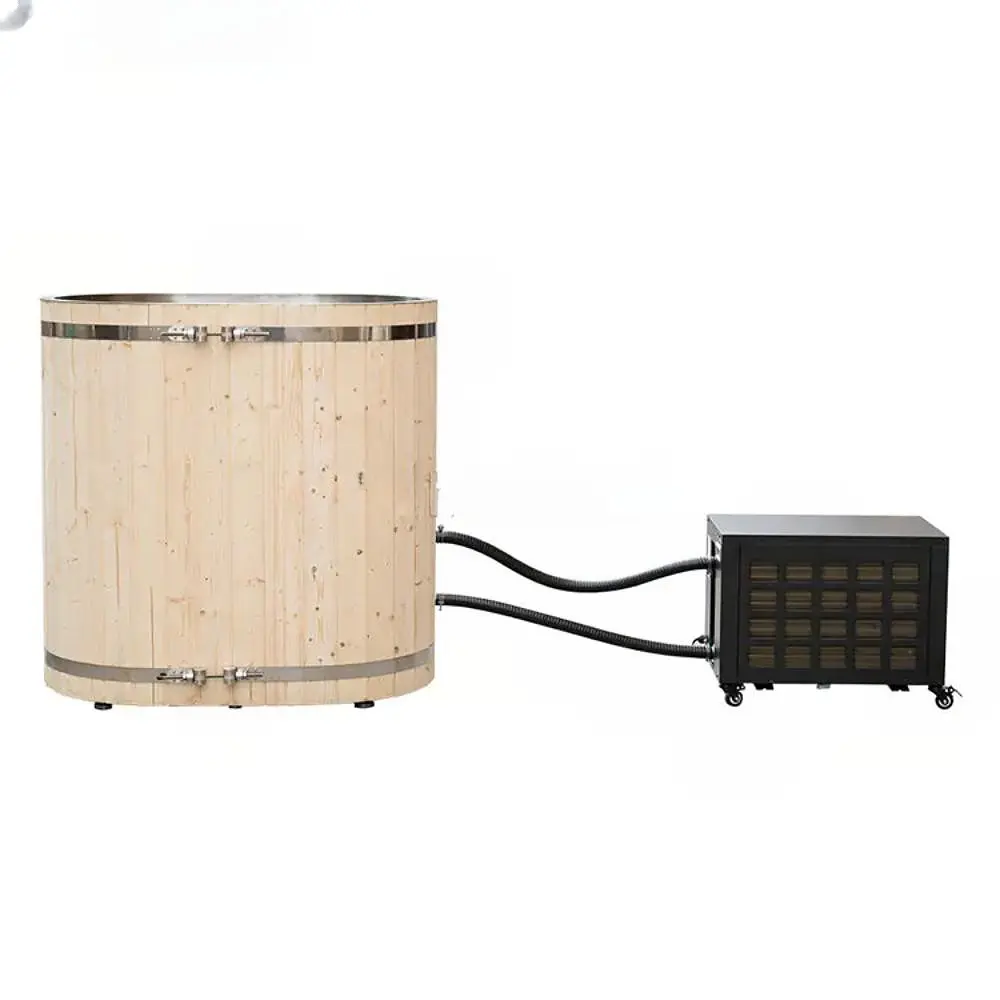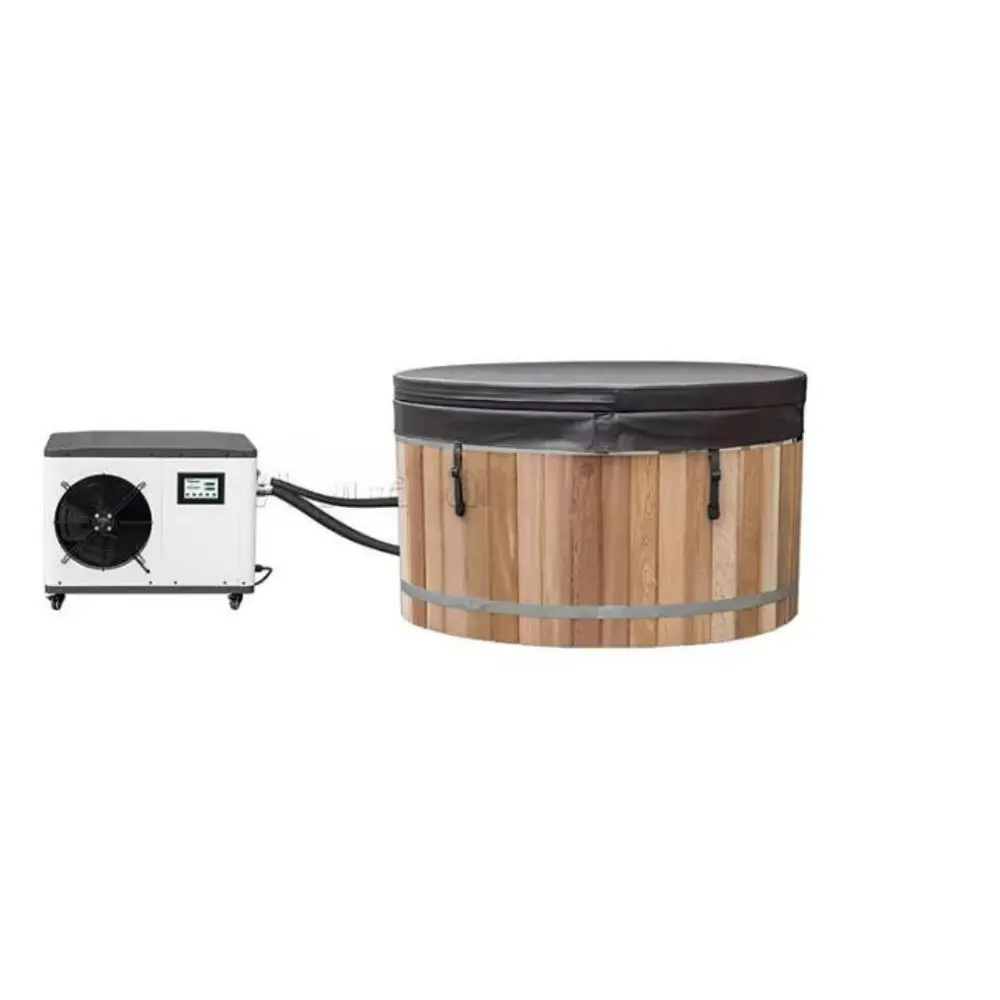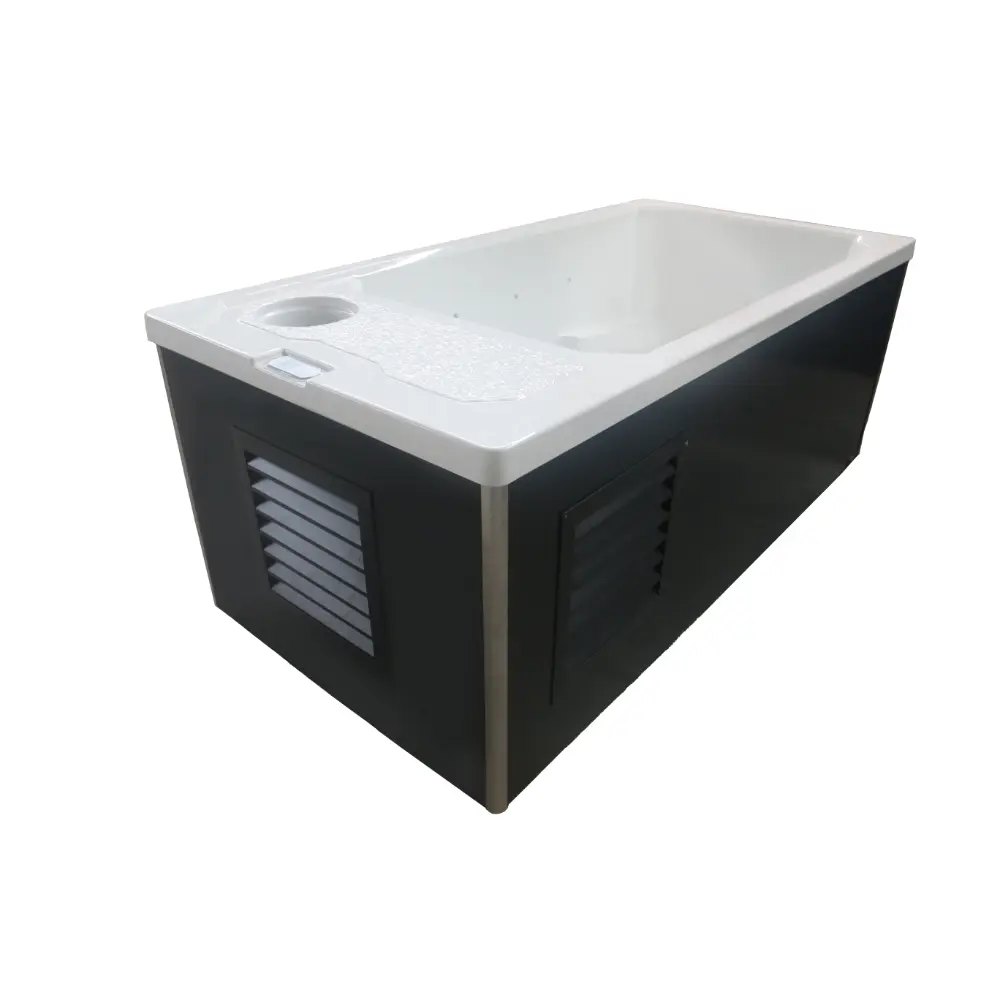Introduction
A cold plunge tub temperature between 37°F and 50°F (2.8°C to 10°C) provides the best balance of muscle recovery, inflammation reduction, and safety. Cold plunging is quickly becoming a go-to method for athletes, wellness enthusiasts, and those seeking mental resilience. But how cold should a cold plunge tub be for the best results?
In this guide, you’ll discover:
✅ The best cold plunge temperatures for beginners and experts
✅ How long to stay in a cold plunge tub safely
✅ Essential cold plunge safety tips
✅ Top cold plunge tubs with precise temperature control
Now, let’s dive into the details! ❄️

1. Finding the Best Temperature for a Cold Plunge
The ideal cold plunge temperature depends on your experience level and recovery goals. Beginners need a gentler start, while experienced users may prefer a more intense cold shock.
Recommended Temperature Guide
| Experience Level | Recommended Temperature | Duration |
| Beginner | 50°F – 59°F (10°C – 15°C) | 5–10 minutes |
| Intermediate | 45°F – 50°F (7°C – 10°C) | 3–5 minutes |
| Advanced | 37°F – 45°F (2.8°C – 7°C) | 1–3 minutes |
Why Does Temperature Matter?
Before choosing your ideal temperature, it’s important to understand its impact on your body.
- �� Too warm (above 60°F) – Less effective, minimal benefits.
- ❄️ Too cold (below 37°F) – Risk of shock, frostbite, and hypothermia.
- ✅ Ideal range (45°F – 50°F) – Best for recovery, blood flow, and resilience.
�� Pro Tip: If you’re new to cold plunging, start at 55°F. Then, gradually decrease the temperature over time.
2. Cold Plunge Benefits at Different Temperatures
Each temperature range affects the body differently. So, understanding these effects can help you maximize the benefits of cold therapy.
| Temperature | Effect on Body | Best For |
| 50°F – 59°F | Mild cooling, improves circulation | Beginners, relaxation |
| 45°F – 50°F | Reduces inflammation, muscle soreness | Athletes, post-workout recovery |
| 37°F – 45°F | Intense cold shock, maximizes resilience | Advanced users, Wim Hof training |
The Science Behind Cold Therapy:
Scientific studies confirm that cold plunging provides real health benefits. For example:
- 🔥 Inflammation decreases by up to 40% with regular cold therapy.
- 💪 Muscle recovery speeds up by 30%, thanks to improved circulation.
- ❄️ Metabolism increases, since cold activates brown fat and burns calories.
Because of these benefits, cold plunging is widely used by athletes, biohackers, and wellness enthusiasts.
3. How Long Should You Stay in a Cold Plunge?
Although cold plunging is safe when done correctly, staying in for too long can be dangerous.
| Temperature | Recommended Time | Risk Level |
| 50°F – 59°F | 5-10 minutes | Low risk ✅ |
| 45°F – 50°F | 3-5 minutes | Medium risk ⚠️ |
| 37°F – 45°F | 1-3 minutes | High risk �� |
When Should You Exit the Plunge?
Since cold exposure affects people differently, always listen to your body. Here are some warning signs:
- ❌ Shivering uncontrollably
- ❌ Numb hands or feet
- ❌ Dizziness or nausea
🚨 Warning: If you experience these symptoms, exit the water immediately and warm up gradually.
4. Cold Plunge Safety Tips
While cold plunging has many benefits, it can also be risky without the right precautions.
✅ Do:
✔️ Start with short dips and lower the temperature gradually.
✔️ Always have a towel and warm clothing nearby.
✔️ Use a high-quality cold plunge tub with temperature control.
�� Don’t:
❌ Stay in longer than 10 minutes.
❌ Use a cold plunge if you have heart or breathing problems.
❌ Go alone—always have someone nearby.
By following these safety tips, you can enjoy cold plunging while minimizing risks.
5.Best Cold Plunge Tubs for Temperature Control
Choosing the right cold plunge tub is essential for maintaining consistent water temperatures. Here are some of the best options available:
�� Cold Plunge Tub CP218
- Temperature range: 37°F – 59°F
- Chiller system: Built-in for precise cooling
- Best for: Home and commercial use
�� Cold Plunge Tub CP215
- Durable insulation for stable temperatures
- Portable design for easy setup
- Budget-friendly option

�� Cold Plunge Tub CP213
- Adjustable temperature control
- Designed for fast cooling
- Great for recovery and therapy
�� Which One is Best?
�� Check out more options from Cold Plunge Tub Manufacturers.

6. FAQs: Cold Plunge Temperature & Setup
❓ What is the ideal cold plunge temperature?
The best range is 45°F – 50°F. If you’re experienced, 37°F – 45°F provides greater benefits.
❓ Can I stay in a cold plunge longer than 10 minutes?
No. 5–10 minutes is enough. Staying too long increases the risk of hypothermia.
❓ How do I make my cold plunge colder?
- 🧊 Add ice for quick cooling.
- ❄️ Use a tub with built-in chiller (like the Cold Plunge CP218).
❓ Is 37°F too cold for a beginner?
Yes! Beginners should start at 50°F – 59°F and gradually go lower.

7. Conclusion: The Perfect Cold Plunge Temperature
✅ Best temp for beginners → 50°F – 59°F
✅ Best temp for muscle recovery → 45°F – 50°F
✅ Best temp for cold shock benefits → 37°F – 45°F
Ready to Get Started?
To experience the benefits of cold plunging, you need a high-quality cold plunge tub with precise temperature control.
�� Recommended Tubs:
1️⃣ Cold Plunge Tub CP218
2️⃣ Cold Plunge Tub CP215
3️⃣ Cold Plunge Tub CP213
🔗 Start your cold therapy today!
